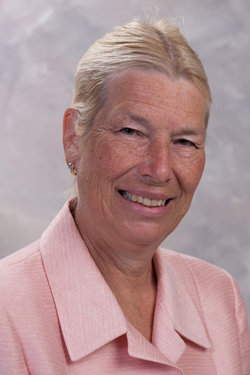
The University of Illinois College of Medicine at Peoria will soon be celebrating its 40th anniversary. As we prepare for this milestone, we’ve been reviewing some of our history. As I look through the pictures of our early 1970s classes, I am struck by the near-total absence of women and minorities. Since training a diverse physician workforce is one of the University’s goals, what are we doing to improve diversity, and how successful have we been?
First, what do I mean by diversity? In this context, it is not only sex and ethnicity. We must train physicians who are diverse in many ways. We must train physicians who will practice in diverse settings, including rural sites, which are increasingly underserved. We must provide physicians interested in practicing in diverse fields, including primary care and psychiatry, as well as other specialties. Finally, we must provide our students with diverse educational opportunities. A physician’s first responsibility remains the medical care of his or her patients. However, physicians must increasingly advocate for their patients’ health through participation in health system reform, community education and team leadership. We must provide them with opportunities to learn these diverse skills.
The class of 2012 just began its work in Peoria. This class is 41 percent women and 22 percent under-represented minorities. The level of diversity evident in our class pictures has changed markedly over the last 40 years. We’ve also increased the diversity of our teaching faculty. However, this increased diversity is mostly at the junior rank of assistant professor, so there is still a lot more to be accomplished.
Smaller, rural communities across Illinois are struggling to find physicians. Physicians who grow up in smaller communities are more likely to return to one to practice. At UIC, we strive to attract students from smaller communities and provide them with learning opportunities to sustain their interest in rural health. One such program is the RSPP (Rural Student Preceptor Program). This program allows third-year students to spend the bulk of their year in a smaller community where they work alongside rural physicians, a mentoring experience that increases the likelihood that they will return to a rural community. Seventy-six percent of students who participated in this program and are now in practice chose a rural site. Some of them are now teaching a new generation of students.
Our students enter a diverse array of specialties. Compared to many medical schools, we have more students choosing the primary care disciplines (medicine, pediatrics, family medicine or medicine/pediatrics). Yet the number choosing primary care is still low, and this remains a source of concern. Local efforts cannot substantially change this distribution, as it reflects student debt, physician recognition, the “hassle factor” and lifestyle.
We already have a diversity of residencies (neurosurgery, surgery, neurology, emergency medicine, radiology, medicine/pediatrics, family medicine, medicine, ob-gyn and pediatrics). We expect to start a new psychiatry residency in 2011 which will further improve our ability to educate future physicians about patients’ mental health needs. Physicians need to address patients’ social and mental health needs as well as their physical concerns. We continue to work with our local hospitals to expand residency and fellowship opportunities. Residents/fellows tend to practice where they train, which will help our communities address the looming physician shortages.
Finally, the education we provide our students is increasingly diverse. Forty years ago, we taught medical knowledge and physical exam skills. Now we also teach ethics, epidemiology, end-of-life counseling, patient education, team training and many other skills. Today’s physicians need a more diverse education so they have the skills they need in many different arenas. We are continually modifying our curriculum to provide this diversity.
UICOMP has become much more diverse over the last 40 years, although there are still plenty of opportunities for further improvement. We can be proud of what we’ve accomplished so far and look forward to working together to educate physicians who will meet the diverse needs of our communities. iBi

